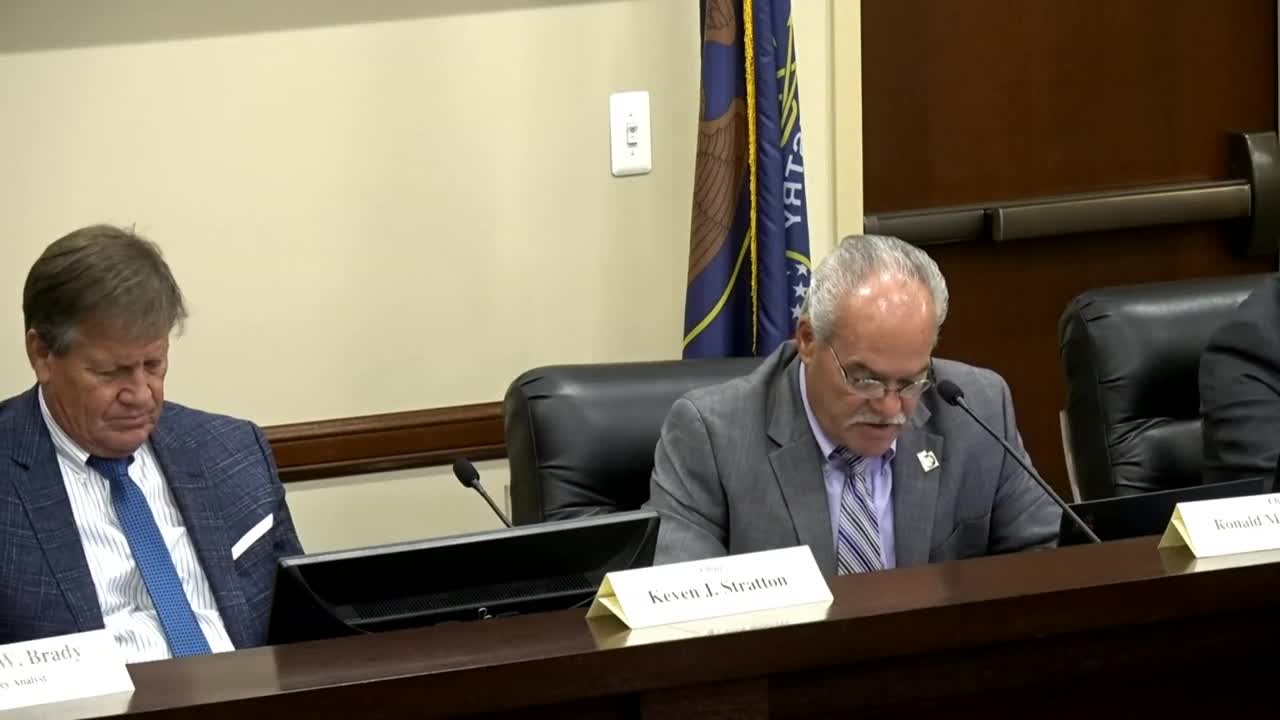State Jurisdiction Bill Seeks to Rein in Federal Power
August 19, 2024 | Utah Interim, Utah Legislative Branch, Utah
This article was created by AI summarizing key points discussed. AI makes mistakes, so for full details and context, please refer to the video of the full meeting. Please report any errors so we can fix them. Report an error »

In a recent government meeting, discussions centered around the implications of federalism in light of recent Supreme Court rulings, particularly the Loper Bright decision, which overturned the Chevron deference doctrine. This doctrine had allowed federal agencies to interpret ambiguous statutes, but the Supreme Court's ruling now mandates that federal courts exercise independent judgment regarding agency authority. This shift has significant implications for state jurisdiction, as highlighted by a proposed bill that asserts state jurisdiction unless explicitly stated in the Constitution.
The bill aims to clarify the balance of power between state and federal authorities, emphasizing that state agencies retain jurisdiction over matters not explicitly enumerated for federal governance. This is particularly relevant as federal agencies increasingly attempt to impose regulations on state and local governments. The proposed legislation would require federal entities to demonstrate their jurisdiction, thereby reinforcing state sovereignty.
Additionally, the meeting addressed several recent court cases with federalism implications. One notable case involved Kansas challenging Title IX regulations that sought to expand protections against discrimination based on sexual orientation and gender identity. A federal court issued a preliminary injunction against these regulations, aligning with Utah's legislative resolutions that directed state agencies to refrain from compliance.
Another significant case discussed was Ohio versus the EPA, where the Supreme Court paused the enforcement of new ozone standards proposed by the EPA. The court's decision suggested that challenges to these standards, including those from Utah, are likely to succeed, as the EPA failed to adequately justify its regulations.
Overall, the meeting underscored a growing emphasis on state rights and jurisdiction in the face of federal overreach, reflecting a broader trend in legal interpretations of federalism. The proposed bill and recent court rulings signal a pivotal moment in the ongoing dialogue about the balance of power between state and federal governments.
The bill aims to clarify the balance of power between state and federal authorities, emphasizing that state agencies retain jurisdiction over matters not explicitly enumerated for federal governance. This is particularly relevant as federal agencies increasingly attempt to impose regulations on state and local governments. The proposed legislation would require federal entities to demonstrate their jurisdiction, thereby reinforcing state sovereignty.
Additionally, the meeting addressed several recent court cases with federalism implications. One notable case involved Kansas challenging Title IX regulations that sought to expand protections against discrimination based on sexual orientation and gender identity. A federal court issued a preliminary injunction against these regulations, aligning with Utah's legislative resolutions that directed state agencies to refrain from compliance.
Another significant case discussed was Ohio versus the EPA, where the Supreme Court paused the enforcement of new ozone standards proposed by the EPA. The court's decision suggested that challenges to these standards, including those from Utah, are likely to succeed, as the EPA failed to adequately justify its regulations.
Overall, the meeting underscored a growing emphasis on state rights and jurisdiction in the face of federal overreach, reflecting a broader trend in legal interpretations of federalism. The proposed bill and recent court rulings signal a pivotal moment in the ongoing dialogue about the balance of power between state and federal governments.
View full meeting
This article is based on a recent meeting—watch the full video and explore the complete transcript for deeper insights into the discussion.
View full meeting

